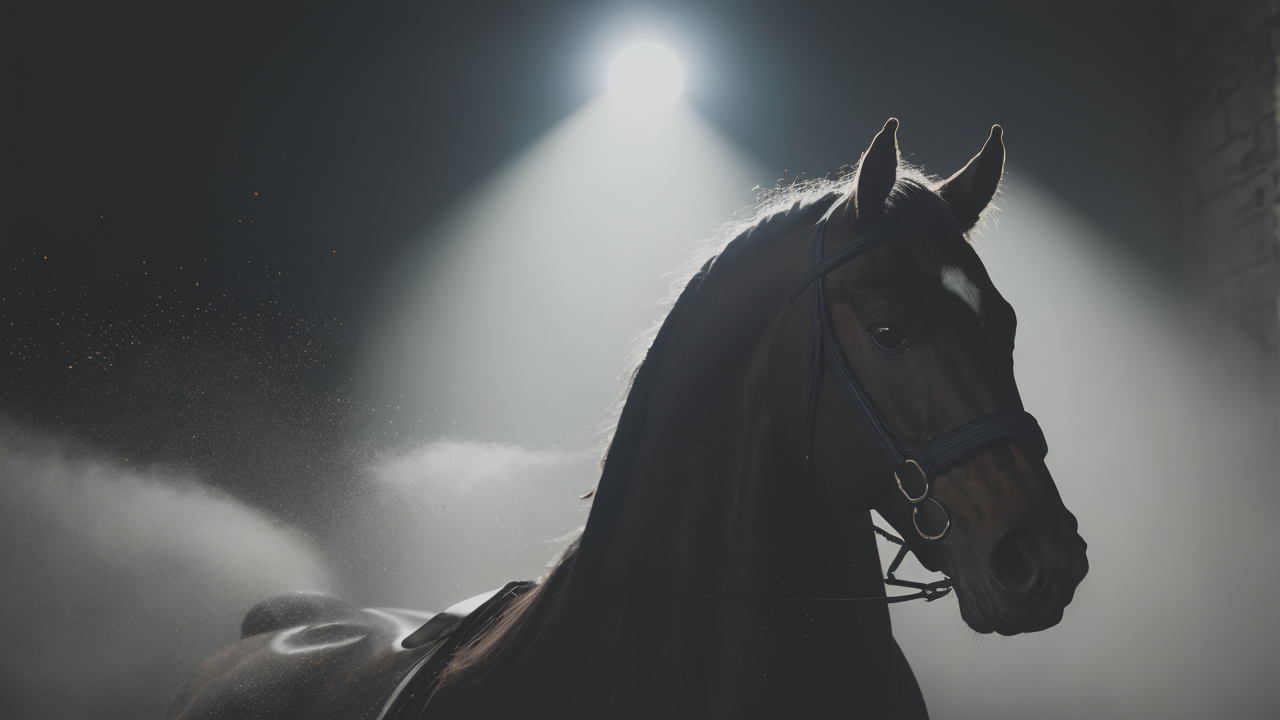
Revolutionizing Horse Artistry: Innovative Techniques in Plaster, Sculpting, and Painting
The Renaissance of Plaster Textures in Modern Horse Art
The History of Plaster in Equine Sculpture
Plaster has been a staple in equine sculpture for centuries. It dates back to ancient civilizations. The Greeks and Romans used it to create lifelike horse statues. These early artists valued plaster for its versatility and ease of use. In the Renaissance, plaster became even more popular. Artists used it to make molds and casts of their work. This allowed for easier reproduction and preservation of their art. Over time, plaster's role evolved. It became a medium in its own right, not just a tool for casting. Artists began to appreciate its unique textures and finishes. They saw how it could bring horses to life in new ways.

How Contemporary Artists are Incorporating Plaster Textures
Today's artists are pushing the boundaries of plaster in horse art. They're using it in innovative ways to create stunning pieces. Some mix plaster with other materials for unique effects. Others focus on its raw, natural texture. Many artists use plaster to add depth and dimension to their work. They create intricate details that catch light and shadow. Some apply thin layers to build up subtle textures. Others use thick applications for bold, dramatic effects. Contemporary artists also experiment with color in plaster. They might add pigments or paint over the dried surface. This allows for a wide range of artistic expressions in equine art.
Advantages of Plaster Textures for Equestrian Sculpture
The Versatility of Plaster for Different Horse Poses
Plaster is incredibly versatile for creating horse sculptures. It can capture a wide range of poses and movements. Artists can mold it into any shape, from rearing stallions to grazing mares. The material is soft enough to work with ease, yet it hardens to a durable finish. This allows artists to create both delicate details and bold structures. Plaster can be carved, sanded, and refined after it sets. This gives artists more control over the final look. They can adjust proportions and add fine details. Plaster also works well for both small and large-scale pieces. It's lightweight, making it ideal for bigger sculptures. Yet it's strong enough to hold intricate designs in miniature works.

Plaster Textures and Their Impact on Viewer Engagement
Plaster textures have a unique ability to engage viewers. They add a tactile quality to horse sculptures. This invites people to look closer and even want to touch the art. The play of light on textured surfaces creates visual interest. It can make a static sculpture seem more alive and dynamic. Rough textures might evoke the coarse hair of a horse's mane. Smooth areas can mimic the sleek muscles of a racing steed. These textures tell a story and convey emotion. They can make viewers feel connected to the horse in the artwork. Plaster's natural, earthy look also adds authenticity. It can make sculptures feel more real and present.
Case Studies: American Horse Artists Leading the Way
Notable Equestrian Artists Using Plaster Textures
Several American artists are at the forefront of using plaster in horse art. Sarah Thompson, based in Kentucky, is known for her life-sized horse sculptures. She uses plaster to create highly detailed, textured coats. Her work captures the spirit and movement of horses in motion. In Colorado, John Martinez combines plaster with metal in his equine art. He creates abstract pieces that play with form and texture. His work challenges traditional views of horse sculpture. Emily Chen, a rising star from California, uses colored plaster in her work. She creates vibrant, modern takes on classic equestrian themes. These artists show the range of what's possible with plaster in horse art. They're inspiring a new generation of artists to explore this medium.

How Plaster Textures Are Shaping the Future of Equestrian Art in the United States
Plaster textures are changing the landscape of equestrian art in America. They're opening up new possibilities for expression and creativity. Artists are moving beyond traditional smooth, polished surfaces. They're embracing the raw, natural qualities of plaster. This shift is bringing a fresh energy to the field. It's attracting younger artists and viewers to equestrian art. Galleries and museums are taking notice. They're featuring more textured horse sculptures in their exhibits. This exposure is helping to redefine what horse art can be. It's no longer limited to realistic bronzes or paintings. Plaster allows for more abstract and experimental approaches. This is broadening the appeal of equestrian art to new audiences. It's also encouraging more diverse voices in the field. As a result, American equestrian art is becoming more innovative and inclusive.
In conclusion, plaster textures are revolutionizing horse artistry. They offer endless possibilities for creativity and expression. Artists are using them to breathe new life into a classic subject. Plaster's versatility allows for both traditional and avant-garde approaches. It's making horse art more accessible and engaging to a wider audience. As more artists explore this medium, we can expect to see exciting innovations. The future of equestrian art in America looks bright, thanks to the renaissance of plaster textures.


